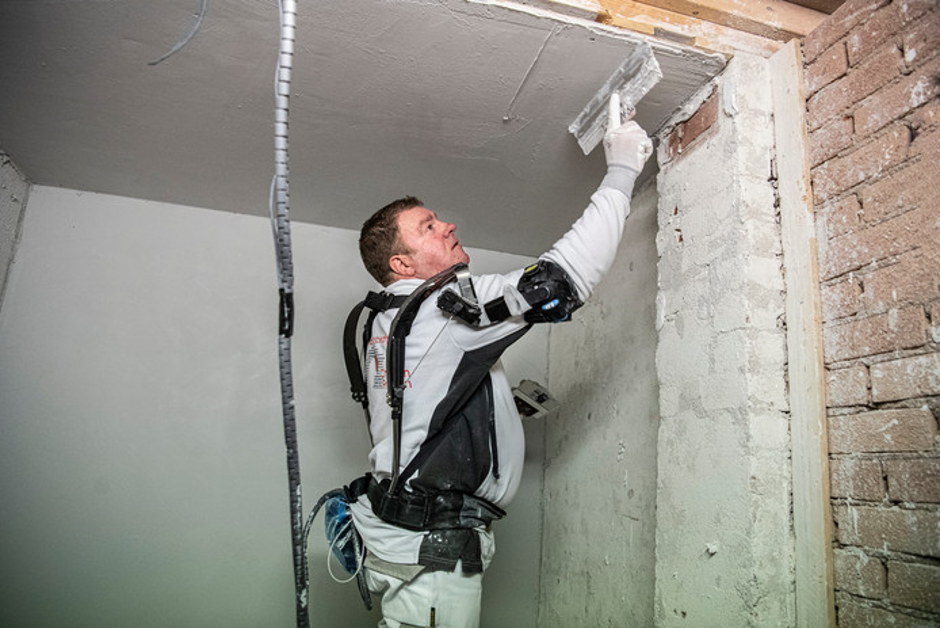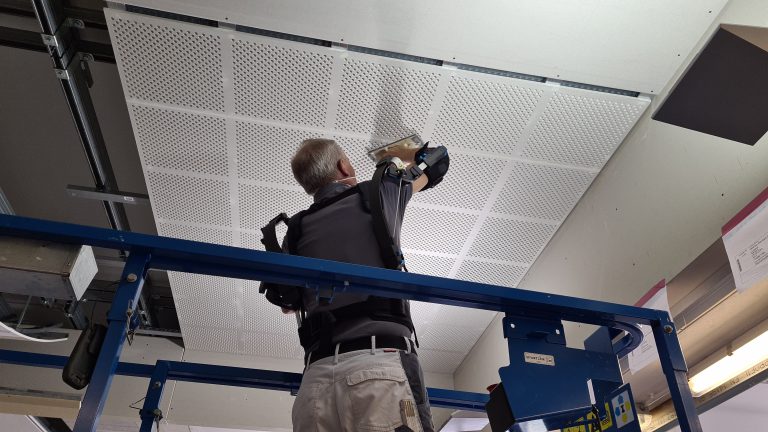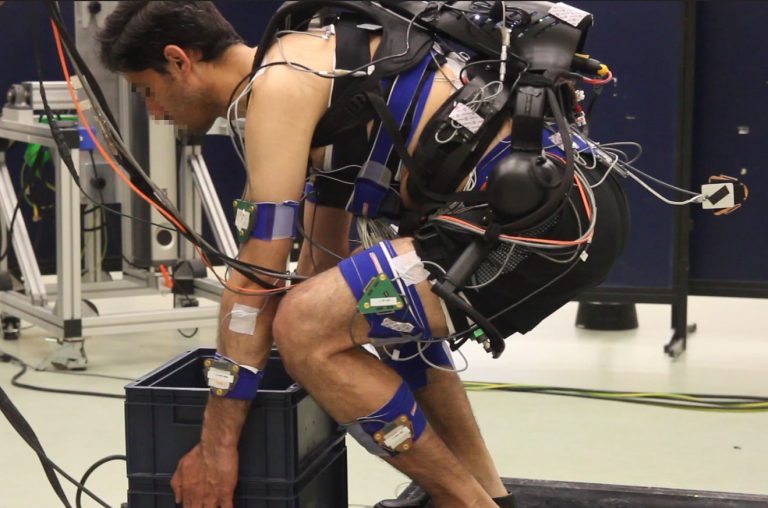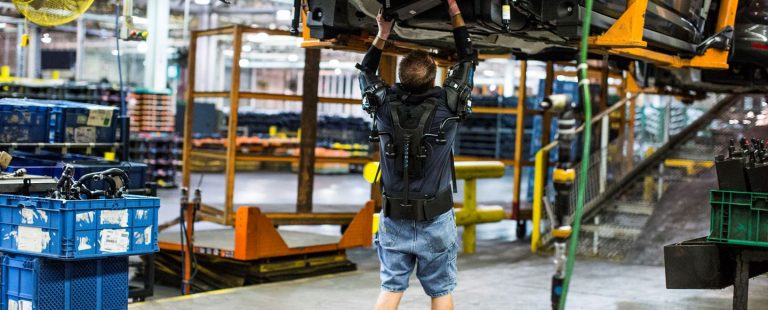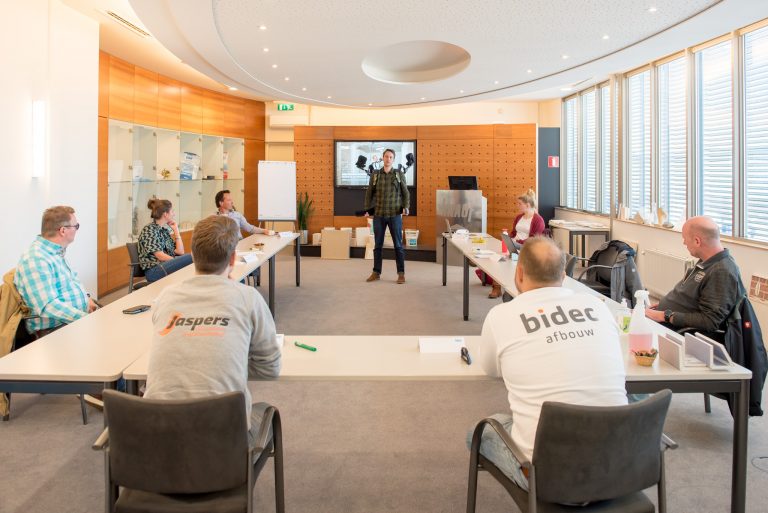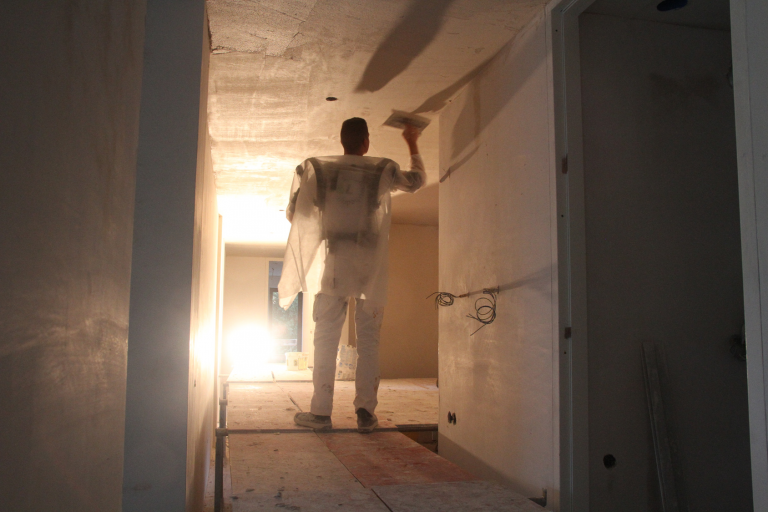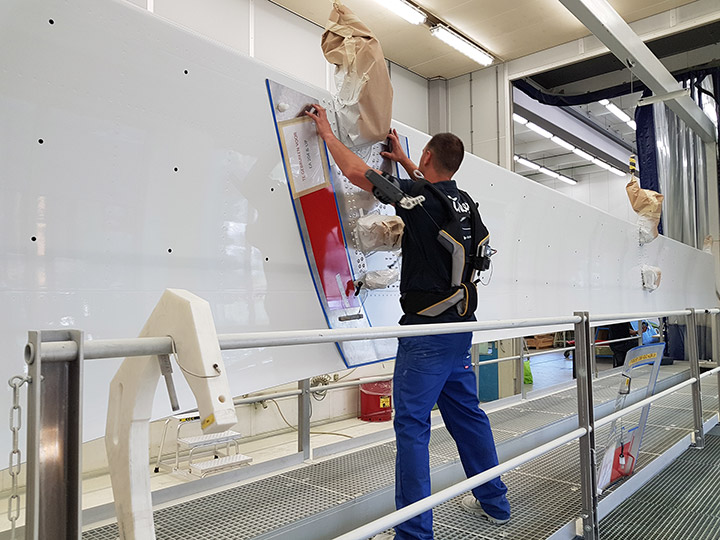
What we do
In construction, manufacturing, and logistics, many workers are still exposed to heavy work. The associated load on the human body often leads to discomfort and fatigue, limiting productivity and job attractiveness. It may also lead to injury, sickness and disability on the long term.
Industrial exoskeletons have been proven to be effective in reducing workload, specifically in studies on isolated and quasi-static activities. Whether exoskeletons are effective in real work depends on the specific work context, the job profiles and the patterns of working activities, body movements and postures over time.
Although workload reduction may reduce the risk of developing injuries, there is no scientific evidence yet that injury, sickness and disability rates really drop where exoskeletons are used. This would require a controlled, long-term study including hundreds of participants (not performed yet)
Some passive exoskeletons (using a spring-mechanism) are finding their way into practice now. Active exoskeletons (with actuators) are potentially more effective and adaptive, but need technical improvement, for instance in its sensor-based control mechanism. Another development concerns soft exosuits which are more comfortable to wear, but not sufficiently powerful yet in order to support workers in heavy work.
The TNO team focuses on:
- Development of new passive, semi-active and active exoskeletons
- Application of exoskletons in real work settings (lowering barriers for implementation)
- Evaluation of exoskeletons (in lab and field) on work load, human body impact, usability and acceptance
